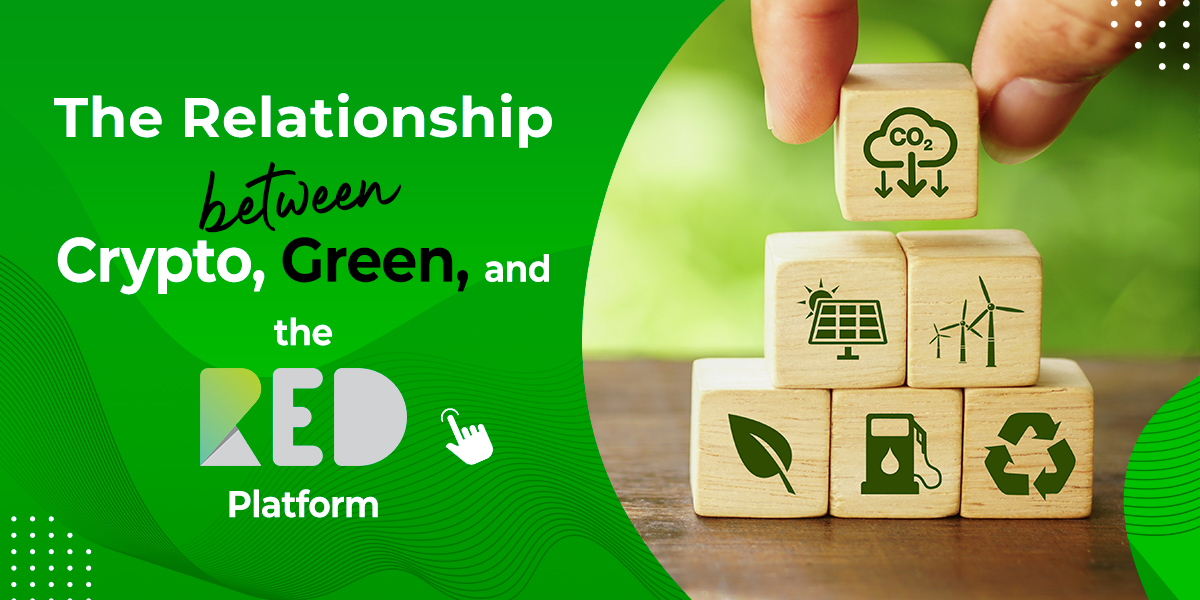 Recently, there has been a lot of focus on Bitcoin’s alarming environmental effects. While attempts are being made to reduce the Cryptocurrency’s carbon footprint, some investors are abandoning the cryptocurrency in favor of greener choices. Which, if any, of the more than 4,500 mineable coins and tokens are the most sustainable cryptocurrencies? Before moving to that, let’s discuss cryptocurrency and whether green energy can contribute in any way to a green future for cryptocurrencies.
Recently, there has been a lot of focus on Bitcoin’s alarming environmental effects. While attempts are being made to reduce the Cryptocurrency’s carbon footprint, some investors are abandoning the cryptocurrency in favor of greener choices. Which, if any, of the more than 4,500 mineable coins and tokens are the most sustainable cryptocurrencies? Before moving to that, let’s discuss cryptocurrency and whether green energy can contribute in any way to a green future for cryptocurrencies.
What is Cryptocurrency?
Cryptocurrency is a digital payment mechanism that does not rely on banks for transaction verification. It’s a peer-to-peer payment system that allows anybody to send and receive money anywhere. Cryptocurrency payments exist solely as digital entries to an online database identifying specific transactions rather than tangible money carried around and exchanged in the real world. Transactions involving bitcoin funds are recorded in a public ledger. Digital wallets are where cryptocurrency is kept.
The term “cryptocurrency” refers to the use of encryption to verify transactions. This means specialized coding is required to store and transport bitcoin data between wallets and public ledgers. Encryption’s goal is to ensure security and safety.
Relation between Crypto and Energy
Bitcoin is the leading cryptocurrency. Thousands of computers are buzzing worldwide, pounding out complicated math problems that produce and support Bitcoin.
This network makes Bitcoin appealing: it is decentralized, constantly on, and easily tradable. However, this implies that the network is always using energy, which is a source of contention for many bitcoin doubters and detractors. And it isn’t only a bitcoin issue. Other cryptocurrencies and blockchains, such as Ethereum, have similar difficulties.
Mining for Bitcoin or any proof-of-work (PoW) cryptocurrency, like mining for actual gold, is designed to use a significant amount of energy. The technique is meant to take control of a complete crypto network prohibitively expensive (but not impossible).
Cryptocurrency supporters claim that this decentralized structure has several advantages over centralized currency systems because cryptocurrency networks may operate without needing a trusted middleman such as a central bank. Miners, rather than any centralized authority, employ massive quantities of computer power to administer and secure a cryptocurrency network.
The high energy consumption of crypto mining is a major disadvantage, but this can be changed with the use of green energy.
Impact of Crypto
Calculating cryptocurrency’s carbon impact is more difficult. Although fossil fuels are the most common energy source in most nations where Bitcoin is mined, miners must seek out the most cost-effective energy sources to remain profitable. This sometimes entails depending on new alternative energy installations.
Based on statistics until May 27, 2022, Digiconomist predicts that the Bitcoin network is responsible for around 114 million tons of carbon dioxide per year—equivalent to the quantities created by the Czech Republic.
Could Bitcoin mining use less energy?
Large-scale Bitcoin miners are frequently located in areas where electricity is abundant, dependable, and inexpensive. However, Bitcoin transactions and coin minting do not have to be energy-intensive.
The proof-of-stake (PoS) technique of authenticating cryptocurrency transactions and minting new coins is a low-computing-power alternative to cryptocurrency mining. Instead, the ability to validate transactions and operate the crypto network is dependent on the amount of bitcoin that a validator has “staked” or pledged not to trade or sell.
Other validation techniques are also being developed, such as evidence of history, proof of elapsed time, proof of burn, and proof of capacity. While Ethereum developers have expressed their intention to abandon proof-of-work, there is no such ambition in the Bitcoin community.
RED and Green Comes Together
RED is a leading platform working for the betterment of humanity by providing sustainable energy. A calculator is available on the platform to measure the carbon footprint of any individual. At the same time, we recently implemented a corporate calculator for franchises that can use it to calculate the carbon footprint of other companies. Once the footprint is calculated, users can offset it by purchasing sustainability certificates. These certificates are generated using blockchain technology to provide traceability and data security.
There is also the possibility that a blockchain will be powered by green energy, as is the case of the Zalmoxis blockchain on which the RED Platform also operates. In this case, blockchain technology does not harm the planet because renewable energy is used for its operation.
If you are concerned about the environment and want to play a good role, join the RED Platform today.


